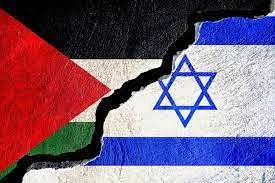Storytelling from the Midst of War: Stories from the Humanitarian Front
- Elif Irmak
- 12 Eki 2023
- 4 dakikada okunur

I always express why I find the permanence of "Storytelling" in our memories important, based on my fieldwork and the education I have received so far. These tales were passed down from generation to generation using traditional "storytelling" techniques. However, with the advent of the digital age, the form and impact of storytelling have fundamentally changed. Now, stories can be not only what our grandparents used to tell us but also the experiences of someone thousands of kilometers away. People, consciously or unconsciously, turn to stories to express complexity in a simple and understandable way. Stories have the power to concretize abstract ideas and concepts, forming the basis for education, business, culture, leadership, and even today's advertising strategies. A good story encourages people to listen and understand better, influence change, establish emotional connections, and provide a powerful way to express an identity, a culture, and the values of a community.
The Digital Transformation of Storytelling

In the digital age, storytelling has taken on a new dimension. The narratives we encounter are no longer limited to pages or screens; with the use of social media, they have the power to connect to the world's most urgent crises. This power sometimes leads to political changes with provocative videos and at other times revitalizes humanitarian aid campaigns with compelling visuals. With the proliferation of digital narratives, the voices of people in crisis regions are louder, sparking more empathy and aid movements worldwide. Thus, access to information and participation in global events can become more democratic. People are no longer just spectators but also interactive participants.
The Power of Digital Narratives: Quotes from Syria
Today's wars and humanitarian stories are being spread worldwide more rapidly and effectively through digital narratives.

Stories from the heart of war, as seen in tragedies like those in Syria, now directly reach people. For example, the documentary film "For Sama" exposed the horror of the Syrian civil war. This film was made by Waad Al-Kateab, a storyteller from the heart of the war. The film presents an intimate narrative, documenting Waad's daily life, her doctor husband's experiences in a collapsed hospital, and the difficulties her family faced. This simple narrative, which doesn't require a professional set, equipment, or a big budget, reached millions of people, leading to global calls for urgent aid. This demonstrates how powerful digital narratives are in conveying the pain and helplessness in war zones.
Films like "For Sama" provide an impactful experience by revealing the heart of war. Such stories about the chaos of war, family bonds, and human resilience emotionally affect people and inspire them to take action. These films not only inform the audience but also increase support and aid movements worldwide. Digital narratives extend beyond just films. Social media has become a powerful tool for sharing stories of people in war zones and revitalizing global aid campaigns. Platforms like Facebook, Twitter, and others facilitate civil society's participation in emergency aid projects. People are no longer just spectators but also active participants.
The Israel-Palestine Conflict and the Impact of Digital Narratives

The long-standing conflict between Palestine and Israel underscores the potential of digital narratives to rapidly and effectively publicize such events worldwide. Social media platforms enable witnesses and victims of this conflict to make their voices heard. Recent events in the Gaza Strip, in particular, offer several examples of the impact of digital narratives. Difficulties faced by the civilian population in Gaza, attacks on Israel during a music festival, and the destruction, as well as the stories of many young people, including the case of German citizen Shani Louk, were disseminated to global audiences through social media using both accurate and inaccurate information, including videos and photos. These events garnered significant international attention, led to differences of opinion and alliances, and initiated aid movements. Activists in Palestine and Israel continue to effectively use social media platforms to inform about the conflict and garner support worldwide.
Drawing Hope from Digital Narratives
Subtleties to Draw from Digital Narratives Offering Hope to Humanity:
The Power of Digital Narratives to Reach the Needy: The power of digital narratives from war zones or disaster-stricken areas lies in their ability to bridge the gap between those in need and those who can provide help. These narratives evoke empathy, mobilize resources, and, most importantly, remind us of the resilience of the human spirit.
The Story of Resilience: Faced with challenging circumstances, people share their stories not as victims but as survivors. These stories remind us that hope perseveres even in the most difficult conditions and that human resilience triumphs.
Digital Narratives: Voices from the Frontlines of Humanitarian Aid: Scanning our digital streams helps us remember the survival stories we encounter. These are not just stories; they are voices from the frontlines of aid, voices that convey understanding, compassion, and calls to action. Thanks to the power of digital narratives, these stories remind us that even in the darkest moments
In conclusion, digital storytelling and its outputs, in conjunction with the voices from the humanitarian frontlines, demonstrate how they can become an effective catalyst even in humanity's most challenging moments. Digital narratives that unveil the realities of wars and disasters serve as powerful tools to inspire action and promote solidarity. Today, they not only engage audiences as passive spectators but also as interactive participants. By bridging the gap between those in need and those willing to help, they play a crucial role in reminding us of human resilience and compassion. Thus, when the effectiveness and importance of digital storytelling unite with the narratives from the humanitarian frontlines, they form a beacon of hope, reminding us that even in the darkest hours, humanity's light can shine through.
Elif Irmak Erkek




Yorumlar